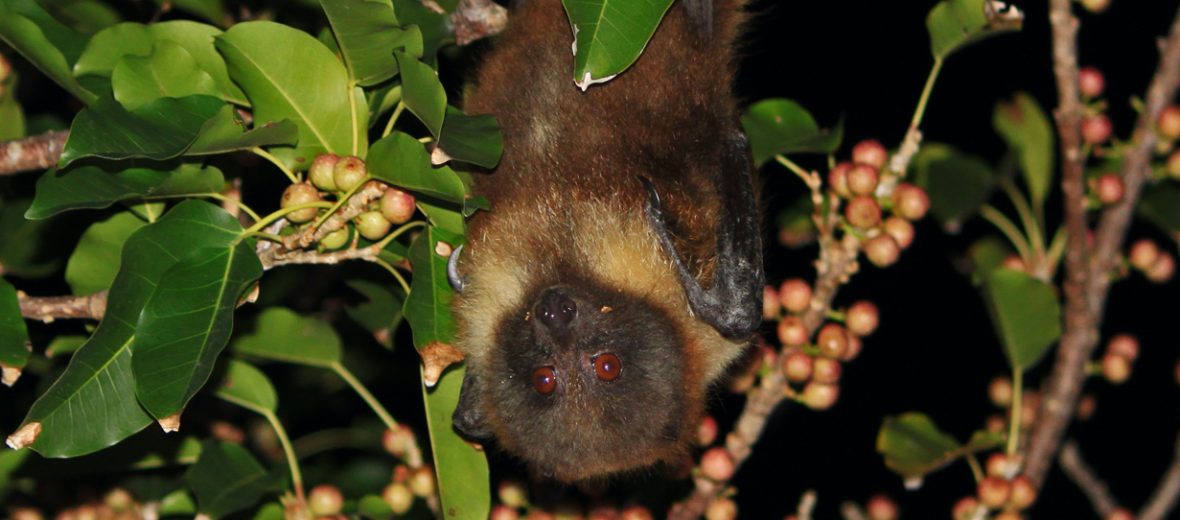
The Ryukyu flying fox, aka Ryukyu fruit bat, can be found on a few islands of Japan, the Philippines, and Taiwan. They prefer tropical and subtropical dry forests and swamps. Unfortunately, due to the threats of habitat loss, at the hands of residential and commercial development, as well as agriculture; hunting; trapping; volcanic activity; invasive species (and with them disease and competition for food); and climate change, these cool critters are listed as Vulnerable by the IUCN. Their populations are also decreasing.
First the Stats…
Scientific name: Pteropus dasymallus
Weight: Up to 1.1 lbs.
Length: Up to 8.7 inches
Wingspan: Up to 4.8 feet
Lifespan: Up to 24 years
Now on to the Facts!
1.) These bats are primarily nocturnal (active at night), but they can sometimes be seen foraging on cherry blossoms during the day.
2.) During the day, they roost individually, or in small to large groups, high up in the trees.
3.) A group of bats is called a flock, cloud, or colony.
4.) Ryukyu flying foxes are herbivores (eat plant matter). More specifically they’re folivores (eat leaves) and frugivores (eat fruit). They consume over 50 species of plants. Flowers and bark are also eaten. It is also presumed that they also take insects, on occasions.
5.) Breeding takes place between November and January.
But wait, there’s more on the Ryukyu flying fox!
6.) Females undergo up to a 6 month gestation (pregnancy) that yields a single pup.
7.) Ryukyu flying foxes are important seed dispersers and pollinators.
Did you know…?
There are only around up to 6,000 wild individuals remaining, to date.
8.) Since these bats don’t hunt on the wing (in mid flight), they do not have the ability to use echolocation, like other bat species.
9.) The largest population of these bats is in the Philippines.
10.) Flying foxes cause an estimated 19 million yen ($175,000) in damages to citrus crops annually.
Now a Short Ryukyu Flying Fox Video!
Be sure to share & comment below! Also, check out the Critter Science YouTube channel. Videos added regularly!
Want to suggest a critter for me to write about? Let me know here.
Photo credit: Koolah



